The Norwegian language is full of words that are hard to explain in English. We take a look at some of the best.
Sometimes, when you ask a Norwegian the meaning of a specific word, you get a blank stare followed by a lot of head scratching.
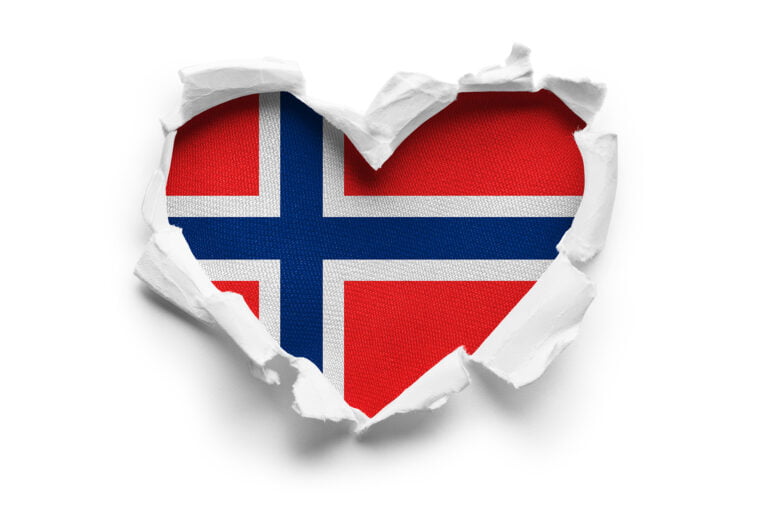
That is because some Norwegian words are untranslatable – to English, that is. This list presents to you the best examples of such words that we could find.
When we say “untranslatable”…
Norwegian, as a North Germanic language, is related to English, but has a much smaller vocabulary. That being said, there are still many words and expressions you'll come across when learning Norwegian that are not directly translatable.
Now bear in mind that when we say “untranslatable”, we don’t mean it literally. Nothing is entirely untranslatable to a skilled translator.
What we mean is that the words and expressions in question have no direct equivalent. To translate them to English, you have to choose either a different word, that conveys a close-but-not-the-same meaning, or a phrase that amounts to a little definition.

And with that disclaimer out of the way, let’s jump into our list of 21 untranslatable Norwegian words.
Døgnvill
We start with one of our favourites. To understand døgnvill, we need to split it into its two components.
Døgn is a Norwegian word that means “day”, but not in the sense of daytime or “have a nice day”. Rather, it refers to the whole period of 24 hours that constitutes a day – from midnight to midnight.
Vill is similar to “wild” in meaning, but it is sometimes used to convey the sense of being lost. Å gå seg vill means to get lots, or lose sense of where you are.

Together, the two words mean having lost the sense of what time of the day it is. The English word “jetlagged” has a similar meaning, but is more restrictive, applying to that sensation one gets from changing time zones rapidly.
You can get døgnvill because you were up late drinking – or up late for any other reason, really. The midnight sun may also make you a bit døgnvill, if you ever travel to northern Norway to experience it.
Matpakke
This word means something close to “packed lunch”. But what makes it difficult to translate is the exact composition of the lunch that the word often entails.
A traditional Norwegian matpakke consists of several slices of bread garnished with pålegg (roughly pronounced paw-leg) and sometimes a piece of fruit or some raw vegetables. The bread used is whole grain and quite dense when compared to standard US, UK or French bread.
You can learn more by reading the whole article we dedicated to the matpakke. “But wait!”, I hear you say. “What’s this paw-leg you mentioned?”. Well that, my friend, is our next untranslatable word.
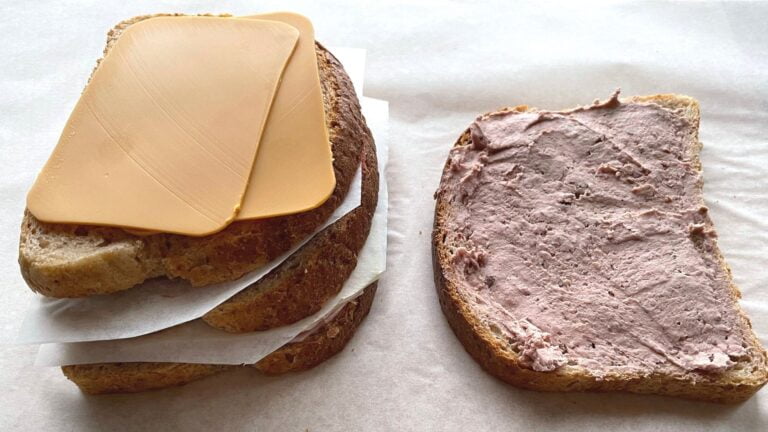
Pålegg
Pålegg literally translates as “on-layer”. But what it really means is “stuff you put on bread”.
Like spreads? Yes, spreads such as peanut butter, jam, Nutella, cream cheese and liver paté are all pålegg. But pålegg includes other things that are not spreads.
Sliced meats and cheeses, smoked fish, hard boiled eggs and sardines all fall under the umbrella term of pålegg. This sheer variety is what makes the word so difficult to translate. You can learn more by reading our article about pålegg.
Attpåklatt
This cute little word refers to a child born long after their older siblings. It is composed of attpå (in addition) and klatt (a little lump – of butter, for example).
When you say that you are the attpåklatt of the family, people will immediately understand that you are much younger than your siblings. The necessary gap required to be able to call yourself an attpåklatt is unclear, but anything 10 years and above is definitely enough.
The limit is probably somewhere around 7-8 years – but this understanding may vary from person to person. Also, beware: you may be tempted to translate attpåklatt with “surprise” or “happy accident”, but this would be wrong: the Norwegian term says nothing about whether the child was planned or not.
Dugnad
A dugnad is a collective, volunteer action by a community that benefits the entire community. Think old time barn raising – a whole village getting together to rebuild a barn after a fire, but applied to a wider range of situations.

The common denominator for a dugnad is that no one gets paid, and that people feel a need to contribute because of the greater good. In the barn raising example, even if only one farmer benefits, the whole community benefits from the concept of having this basic form of fire insurance where your barn is rebuilt by your community.
Volunteer work in Norway is a big part of the culture. In modern times, you will often encounter dugnader (that’s the plural form of the word) in or around apartment buildings – cleaning the yard in the spring, a week or two before 17th of May, is a classic.
A dugnad may also be organised in conjunction with a child sports event, to fix or improve some local infrastructure (like a playground) or to help out people struck by disaster.
Be aware that the word is sometimes misused by unscrupulous employers who want to guilt-trip their staff into doing unpaid work. Such activities, of course, are not technically dugnader because they serve the company bottom line, not the greater good.
Utepils
Utepils is made of ute (outside) and pils. Pils is the abbreviation for pilsner, which is a specific type of lager beer. But in Norway, it is often used as a generic term for beer.
In short, an utepils is a beer enjoyed outside. Most people associate the term with drinking at a bar or restaurant that has an outdoors seating area, but some may also think of it as drinking in a public park – though the latter is technically forbidden.
Be aware that Norwegian laws governing the sales of alcohol are quite strict. As such, you may not walk around with your utepils in hand like you would outside a London pub.
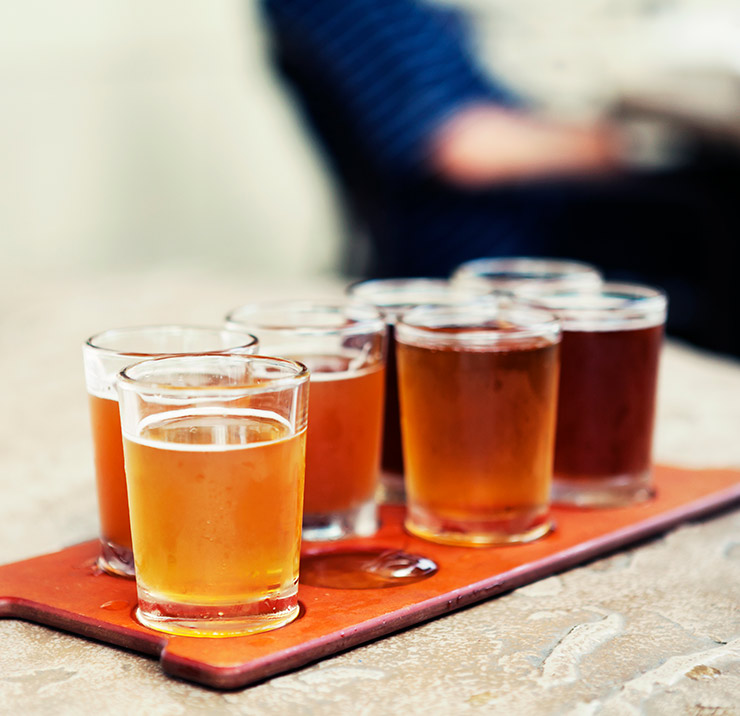
On the contrary, you need to stay within the enclosed area where alcohol is served (it is usually quite clearly delimited with some kind of physical/visual barrier).
While ordering at the bar is common, you may not walk out and go to your table with your beer in hand – instead, tell the bar staff your table number and they will bring your drink to you.
Lønningspils
Lønningspils is one of those words that you may encounter if you move to Norway, after getting a job. It roughly translates to “salary beer”, or “payday beer”. It refers to colleagues going out for a beer, often on the day they get paid (or shortly thereafter).
To a foreigner, the word makes perfect sense given the astronomical prices of beer in local bars and pubs – it seems perfectly doable to spend an entire salary on a night out.
Hyttekontor
Hyttekontor is one of those concepts that became popular during the pandemic. A hytte is a cabin – traditionally quite basic, but in recent years so modern and convenient as to be considered a second house.
Kontor means office. So hyttekontor means working remotely, from your cabin.
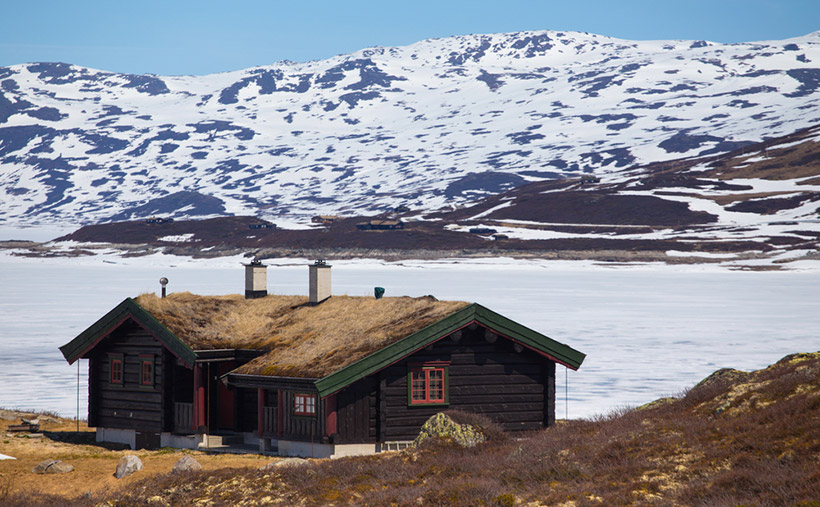
Nice weather is precious in Norway, and working from your cabin may be a good way to make the most of a few weeks of good weather. In a sense, it’s a bit like a working vacation; you’re working remotely, like when you work from home, but the setting is a place where you would normally spend time off.
Obviously, this should not be abused – you may work from your cabin for a few weeks, maybe a month, but certainly not half the year.
Your experience may vary of course. Your workplace’s culture and your boss’ laid-backedness – or lack thereof – will determine if hyttekontor is a perk you can enjoy.
The sibling word of hyttekontor is the more often used hjemmekontor (home office), to which many Norwegian workers were confined for many weeks – or even months, in some cases – during the pandemic.
Ventepølse
How about a waiting sausage – or waiting hot-dog? This is the meaning of ventepølse: a hot-dog you consume while waiting for the main attraction of the day’s barbecue to be ready.
Barbecuing (locally referred to as grilling) is a big deal in Norway. Local supermarkets have a wide array of sausages and pre-marinated meats on sale for the season, usually starting around April.

Engangsgriller – disposable barbecues, can you imagine – are a common sight in public parks in the summer.
Skadefryd
Okay, this one is technically not untranslatable because it means exactly the same as schadenfreude. But come on, that’s German, not English, so surely it still counts?
Like schadenfreude, skadefryd refers to the delight experienced when witnessing other people’s misfortune. It is usually used for more minor instances of suffering, like chuckling at someone stumbling on their shoelaces.
More psychopathic behaviour, like enjoying watching someone getting physically mistreated, is usually not what is thought of when using the word – but there may be exceptions.
Sitteunderlag
Sitteunderlag is a very Norwegian word referring to a very Norwegian item fulfilling a very Norwegian need. It translates literally as “sitting underlayer”, and refers to a little mat you carry around with you to sit on.
If you wonder why such a thing is necessary, you probably have not been to Norway. Norwegians love the outdoors, and enjoy them even when the temperature is, well, cold.

A sitteunderlag keeps your butt warm and dry – as such it serves the same function as the thin insulating airmat some campers use under their sleeping bags when camping in colder areas.
Agurknytt
How about some cucumber news? Agurknytt means just that.
The word is used derisively to refer to news items that have clearly been written as filler because it’s summer, Christmas or some other slow-news period – referred to by the closely related word agurktid.
Agurknytt may include news about unusually large vegetables, Norwegian tourists stranded at a foreign airport and “receiving no information”, things that look like other things (a carrot that looks like a rabbit), Norwegians misbehaving abroad, and any news piece about the weather.
Helt Texas
How can Texas be an untranslatable Norwegian word, you ask? Well, in Norwegian, if you say that the situation is helt Texas, you mean that it’s gone completely out of control.
How out of control it really is, is open to interpretation. It can be said about a children’s birthday party for example.
Since Norwegian society expects you to follow rules and not stand out too much, any instance of slight chaos (like the queuing system being overwhelmed at a concert venue because more people show up than expected) can be considered helt Texas.
Video footage of Americans trampling each other to get good deals on Black Friday are also helt Texas.
Gruglede
This one is a very useful little word that translates literally as “happy dread”. Å gruglede seg means to look forward to an event with a mix of dread and excited anticipation.
It is often used for such events as the first day of school, or the first day at a new job, or for any other big, positive change that requires a (stressful) period of adaptation.
Holke
This one translates as “ice”. But it’s a very specific kind of ice. If you tell a Norwegian that your driveway is covered in holke, they will know immediately that you mean it’s covered by a thick layer of ice.
Specifically, it’s the kind of ice that appears when snow gets compacted, either through being trampled or driven on, or through partial melting and refreezing.
Essentially, it’s a layer of ice that’s difficult to get rid of. It’s too thick to be efficiently melted by salt. The only solution is to cover it in sand or gravel, or hack at it with some kind of metal tool.
Russ
You would be forgiven to think that this one has something to do with Russia. It does not. The russ are the Norwegian high school seniors, in the period from sometime in April to the 17th of May when they celebrate the end of their years of schooling.
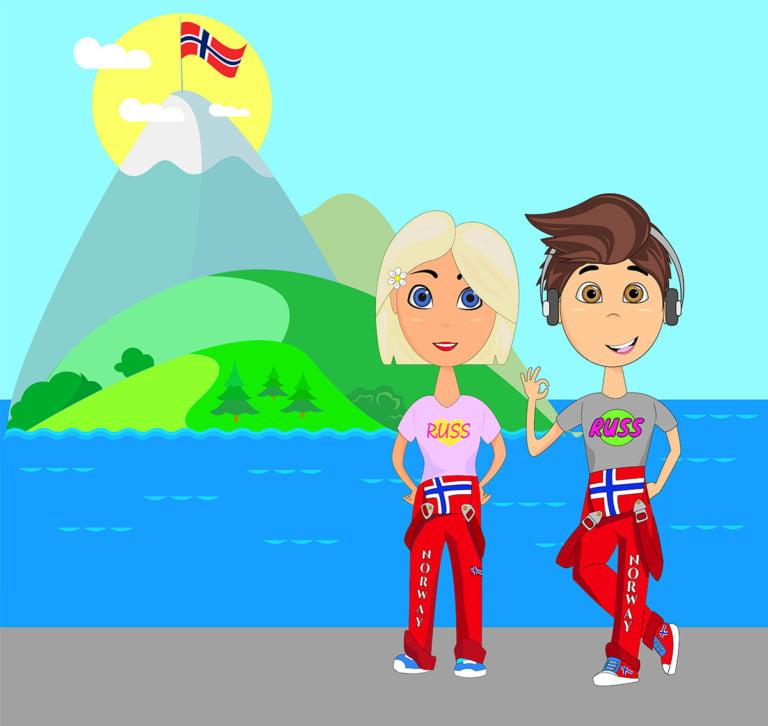
They wear colourful pants (often red, but the colour depends on the specialisation they chose in their last few years of high school) and often exhibit rowdy behaviour.
This word is untranslatable because it refers not just to high school “seniors”, but to the specific activity in which they engage during the few weeks when they celebrate. If you join the celebration for Norway’s national holiday (17th of May), you are guaranteed to see russ out and about.
Janteloven
More than a word, janteloven is a cultural phenomenon. The “law of Jante” refers to this very Scandinavian, traditional way of being: putting society ahead of the individual, not boasting about individual accomplishments, and not being jealous of others.
It is not exclusively a bad thing, but can sometimes feel a bit oppressive. Because it is quite different from the individualism that is often valued in the Western corporate world, it is sometimes seen as a drawback.
Takk for sist
Takk for sist is a polite expression that is definitely untranslatable. It is so untranslatable that we need a few paragraphs to explain it.
Literally it means “thanks for last time”. In fact, before I understood Norwegian, someone said to me “thanks for last time” in English – which understandably baffled me, leaving me wondering what I could possibly have done last time to deserve such understated gratitude.
It is easier to explain when it is used than what it means. When you meet someone for the first time, you introduce yourself. When you meet someone you have met before, you say takk for sist.

That is not to say that you should say takk for sist to everyone you know, all the time. Typically, it is reserved for people you don’t know very well – maybe you met them a few months back on a social occasion – to let them know that you do, indeed, remember them.
So what it means is (and this is really me freestyling it here): I remember meeting you on a previous occasion, and as such introductions are not necessary. Consider yourself greeted.
Neglecting to say takk for sist is not really a social faux pas, but saying it is a nice thing to do. If someone says it to you, you should answer likewise, takk for sist, provided of course that you do remember meeting them previously – unless you want to lie about that, in which case we won’t judge.
Harry
Harry, like the name but pronounced in a Norwegian way, is a derogatory term to refer to vulgar/tasteless/common people. In that sense it can be classified as an elitist term.
That being said, some people took ownership of the term and happily refer to themselves as harry. A harrytur is a trip of cross-border shopping to take advantage of – invariably lower – prices in another country (usually Sweden).
Since taste and fashion are subjective and fluid, the definition of what makes you look harry changes over time.
Pølsevev
This one is technically quite easy to translate but we included it because it’s funny. It translates literally as “sausage weave”.
If a politician gives a speech and a bystander comments to you for noe pølsevev, what they are saying is “what bullsh*t”. It falls in a less vulgar range, though, so more appropriate translations might be drivel, nonsense, hogwash, rubbish, baloney or poppycock.
So next time a Norwegian weaves some sausage in your presence, you’ll be able to call them out on it!
Koselig
What better way to end our list than with the word that is the Scandinavian antidote to everything: koselig. It refers to a mood more than to a specific thing.

Koselig can describe a glass of wine by the fireplace, reading a book by candlelight, listening to the wind at a cabin in the woods during a snowstorm, a picnic in the park, a walk in a cobblestone street or an afternoon spent gossipping over coffee with a friend.
Wonder why Scandinavian countries so often top the rankings for “happy” countries? A big part of the answer is this concept of koselig.
Being an adjective, koselig has a noun, kos, that roughly refers to enjoying the moment, and, more broadly, taking the necessary steps to enjoy the moment.
Are you aware of any untranslatable words that we left out from our list? Which ones of our list do you think we should adopt in English? Let us know in the comments!

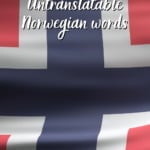

I would recommend a word to match our «døgn». Sometimes you need to say «tre døgn» and have to count hours.
What a bother! 🤣
Thank you for a very interesting article!
bare bare eller ikke bare bare.
Another word that has no direct translation into English is oppholdsvær; weather where it looks like precipitation may be about to happen, but doesn’t.
I thought Norwegian and Swedish were very very similar, I have been told. Can’t the “untranslatable” Norwegian word be translated into Swedish and then into English or is that not possible/doesn’t always work?
I think you’ve missed the point of the article. I suggest re-reading the intro to see what he meant by untranslatable 🙂
If you read the article, you will see that your question is unnecessary.
Uufdah.
I was just about to write that, too!
Hi Judy!
My parents with generations in America have always said they are Scandinavian by way of Scotland and/or Ireland Wales. After they paid Ancestry.com for their professionals to find out, my mother is the most dangerous as her ancestors came from a Jarl who settled in east England where King Henry II gave a knight, an ancestor, a castle built by the king for a reward of the young knight marrying a troublesome baron’s older spinster daughter. This made the baron happy and SCARBOROUGH CASTLE was built, and Scarborough Faire was born in the 15 Century and ran for 500 years.
My dad’s name, oddly, is based on the prefix “Ed”, which means “Oath”. But “Minster” is Scandinavian with some translations meaning “accredited church” such as an Abbey or Monastery.
It’s in several languages of Germanic origins but some Norwegian AND Swedes point to the town of “Ed” on the border of northern Sweden and Norway. Thus, some interpretations mean “Church” (temple, abbey, monastery) of Ed. As Vikings were greatly known for their reverence for loyalty and their hatred of betrayal, the word “Ed” can mean Oath, Vow, Promise, Noble, Covenant and plays out as “Temple of the Covenant” and I can’t find any historical evidence for it, some Norwegian historian had said that the far north Norwegian-Swedish border town was an actual location of where Viking era Spiritually/Magic-producing entities such as Seers, Sorcerers, Sorceresses, Mages, Witches, and other magic wielding characters learned their craft.
How far off is this theory of Ed Minster translating to the above? I am confident that the prefix “Ed” was incorporated into the English and Germanic peoples to name Royal “God-blood” dynasties such as “Edwardian” and first and last names basically meaning “Loyal Ward”, meaning a GOOD KING.
It’s a stretch to say anyone with “Edward” in their name would actually be “good”, so it could be given to someone hopefully with that expectation.
The “Prose Eddas” have that same intent of meaning.
Would you have any info regarding why the town of Ed, basically shared by both countries would be named that unless there was a strong understanding of its existence?
When I saw the title of the article, I fully expected “Uff Da” to be on the list, but perhaps that is too widely known and/or predictable! 😊Fascinating article, I truly enjoyed it.
I expected it also. May be an entire articel on it.
Indeed there is: https://www.lifeinnorway.net/uff-da/
What about takk for maten and velbekomme?
And another…There isn’t a real translation for
Jeg er forsynt or jeg er mett.
Hei hei! This is an unsolicited suggestion that I feel is important to make but hope is not unwelcome: Under «skadefryd» I would recommend changing psychopathic to sociopathic, as the former is characterized by psychopathy (delusions, breaks from reality), which is quite common and can be triggered by trauma and depression, osv., rather than by a lack of empathy, which is a core aspect of the latter. That being said, many persons with clinical sociopathy develop this in response to incredibly severe trauma as well, rather than it being present at birth, which is often the misconception. (And many with, f.eks., antisocial personality disorder, will not necessarily want to cause harm to someone else but will more simply find it very challenging to empathize with another person, as in see things from their perspective; this can but does not always lead to a grey [or darker] moral compass.) Anyway, thank you for your work David! Have always enjoyed your articles.
Oops, I said David, not Daniel. Sorry! Thanks to all involved!
A friend has an interesting variation on attpåklatt, attpåskatt. Skatt is a treasure (or a tax!) so this means that the latecomer in the family is a treasured addition. This also illustrates the way in which the Norwegian use of compound words means that you can invent your own words and expect people to understand them easily!
Hello! What Norwegians call Sitteunderlag, Americans know as a Sit-upon or Situpon. It (the word and the object) is mostly used within childrens’ adventure clubs, where they are often handmade, or with adults who spend a lot of time in the wilderness.
The Girl Scouts use the item to keep the rump from getting wet, sticky etc. when out doors. I’m still looking for a Norwegian slang word for the Swedes. I’m sure there must be one or several.